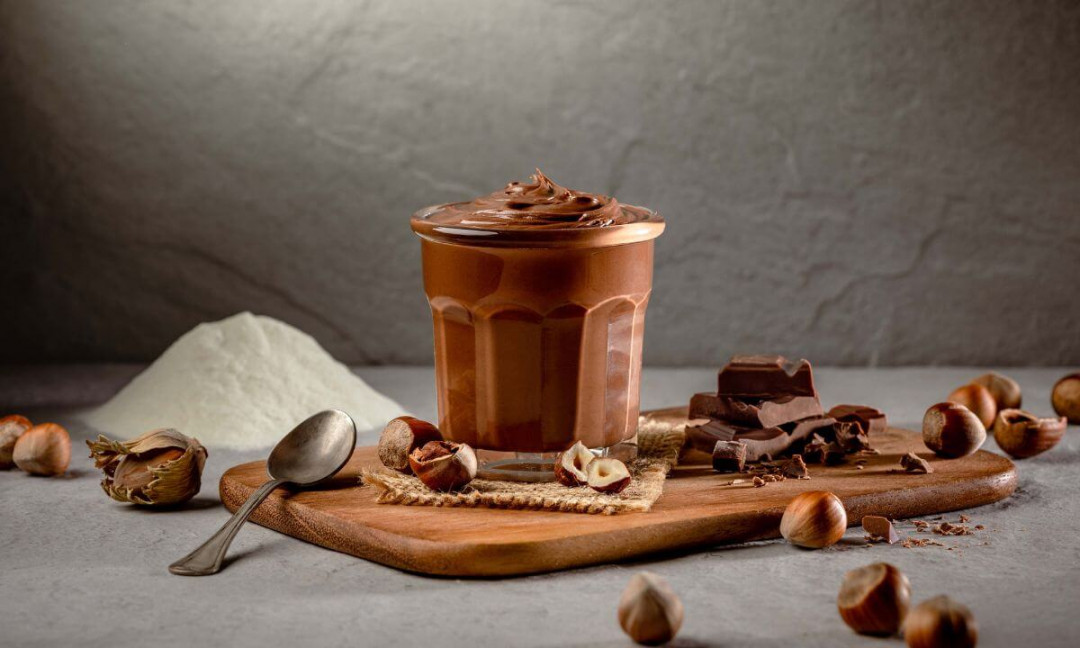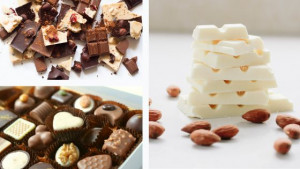
Dairy ingredients in chocolate confectionery
Chocolate confectionery is a booming market. It is estimated at 113 billion dollars for 2022, with average annual growth of 3.9 % expected until 2027 [1]. This market is mainly in Europe and North America. However, it is also experiencing high growth in Asia and the Middle East. Chocolate is a sensitive product with the final quality dependent on the process as well as the quality of the raw materials. Dairy ingredients are frequently used in chocolate making because of their various properties.
What dairy ingredients do in chocolate?
The chocolate market is extremely diverse, offering a broad variety of products with different compositions. Nevertheless, the basic ingredients are always cocoa, butter and sugar. With milk chocolate and white chocolate, dairy ingredients are also important components. In fact, the regulations specify a dairy ingredient content of 14 % for milk chocolate and white chocolate. [2]
The main dairy ingredients used in chocolate are skimmed and whole milk powder. However, many other ingredients are also used, such as buttermilk, lactose, whey and fat. Each type of dairy ingredient confers different characteristics on the chocolate. Its use will affect the viscosity, the chocolate making process (tempering temperature, conching time), and influence the final taste and flavor of the chocolate. Dairy ingredients can also be used to replace certain other ingredients in the interests of economy.
The various role of dairy ingredients in chocolate confectionery
Milk powders
The composition of chocolate is regulated, with a specific proportion of milk solids that must be complied with. Whole milk powder provides the required dairy solids as well as milk fat. Adding it also modifies the flavor, providing a caramelized dairy taste through the Maillard reaction. Finally, its properties help adjust viscosity and reduce runniness. [3]
Skimmed milk powder is used a great deal in chocolate confectionery, giving a milky taste to the chocolate but also a hint of caramelization through the Maillard reaction. Other aspects of the milk powder such as the particles influence the final characteristics of the chocolate. The size, shape and distribution of the particles in the milk powder affect the flow properties of the chocolate, its granulometry and the tempering conditions. [3]
Buttermilk powder is used in chocolate confectionery as an economical substitute for milk powder. It gives a dairy flavor and reduces viscosity during conching due to the presence of phospholipids. [3]
At Lactalis Ingredients, we offer whole and skimmed milk powders suitable for chocolate confectionery. We also offer specific milk powders in response to market trends:
-
-
- For the organic market, we offer organic whole milk powder with Ecocert certification and Guaranteed French Origin.
-
-
-
- To keep pace with the increase in demand for lactose-free products, we offer lactose-free skimmed milk powder
-
- Finally, we also have a range of whole and skimmed milk powders produced from Alpine milk.
-

Milk fat
Milk fat is another important ingredient in chocolate confectionery. Its characteristics can be used to enhance various properties of the chocolate. It softens the texture of chocolate, makes it smoother and alters the flavors, notably by adding a hint of creaminess. It also acts on the viscosity, controlling how runny the chocolate becomes. Finally, the addition of milk fat makes it possible to lower the tempering temperature and inhibits blooming of the chocolate. [3,4]
Depending on the type of chocolate being made, the amount of milk fat added can be used to alter certain of its characteristics. For molding chocolate, the fluidity of the chocolate is improved and the coating becomes finer with a higher fat content. [5] For fillings, crystallized fats are usually the best choice, as they give a feeling of freshness. Fat-rich fillings (such as hazelnut) require a fat with a high melting point as this prevents the migration of hazelnut oil into the coating. Finally, plastic fats are best for spreads as they prevent changes in consistency under storage conditions.
Lactalis Ingredients offers high melting point concentrated butter. This milk fat has been designed for the needs of chocolate confectionery. Suitable for use in all types of chocolate, it improves heat stability, reduces the risk of fat bloom, facilitates demolding and slows down the rate of melting.
Whey powder
Standard whey powder is an economic alternative to skimmed milk powder. Using it makes it possible to reduce the sweet flavor while facilitating the emulsification of fats and encouraging the Maillard reaction. [3] Demineralized whey powder has the same effects, while also accentuating the dairy flavor through the decrease in mineral content. [3]
Have a look at our range of whey powders for chocolate confectionery!

Lactose
Lactose, the natural sugar in milk, can also be used in chocolate, in particular to reduce the sweet flavor by partial substitution for the sucrose. [4] It also adds a hint of caramelization through the Maillard reaction, while acting as a flavor enhancer. Finally, it also functions as a bulking agent, improving the crystallization of the chocolate. [3]
Lactalis Ingredients has a quality lactose that is perfect for use in chocolate confectionery: the kosher certified 100 mesh lactose.
You may like to improve the nutritional profile of your confectionery products with our high-protein chocolate concept. And for more information on the latest trends, Lactalis Ingredients has some interesting reading for you: The chocolate and confectionery market: a dynamic market that meets consumer expectations.
To find out more about our dairy ingredient ranges, you can contact us by clicking here.
Sources :
[1] Global Data, 2022.
[2] Chocolat au lait, gianduja, chocolat noir… comment s’y retrouver ? Economie.gouv, 2023
[3] “Monographie secteur de la chocolaterie dans l’union européenne” PRIOUX Cécile ; INSFA ; fév. 1997.
[4] Effects of Milk Powders in Milk Chocolate. B. Liang, R.W. Hartel, 2004
[5] Source : « Les matières grasses » – ADRIANOR















